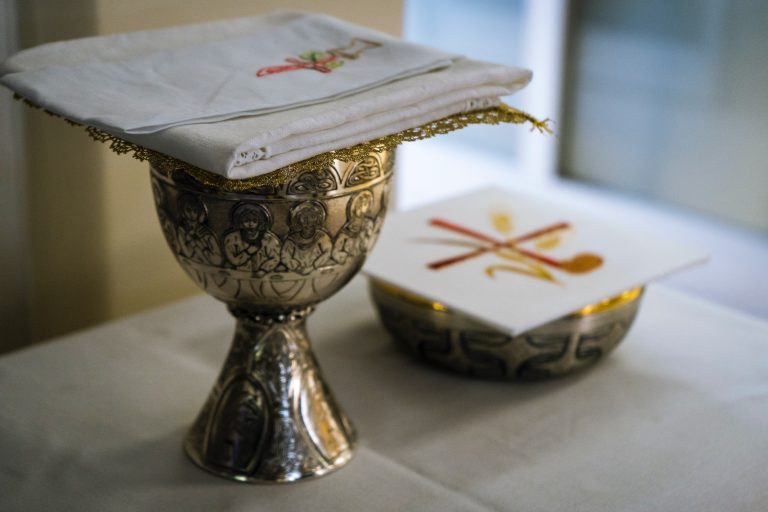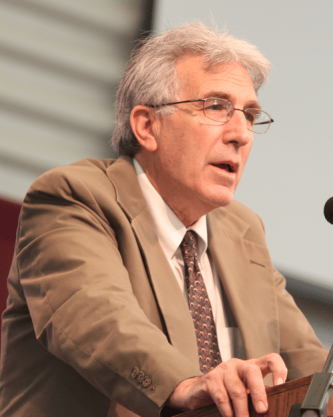For the ancient Greeks, on whom we depend for life and the heritage of the classical world, the goddess Mnemosyne, daughter of the earth goddess Gaia and the sky god Uranus, was designated Mother of all the Muses, from whom the charisms of the art and poetry, science and song, draw their inspiration. And even though its name literally means Memoryonly when Christianity came to complement and perfect the pagan world did the true meaning of memory become clear.
Christianity has not entirely renounced the world it came to replace. What she did was to recover everything good she had, including the idea of memory, which underwent a sort of baptism thanks to the leaven of the Christian Gospel. It was perhaps the poet Pavese who expressed it best when, in describing the power of memory, he called it “a repeated passion”, the exercise of which brings about a real re-presentation of the event itself, thus repeating the passion first aroused by his encounter.
Where else but in the Catholic mass do we find the perfect example of what is happening? This occurs at that precise, climactic moment when the priest, recalling Christ’s sacrifice on the Cross, finds himself empowered by the sacrament of Holy Orders to reenact in a bloodless manner all that Christ accomplished in his supreme moment of self-offering for the salvation of the world. . "Do this in my memory," Christ instructed his disciples in the Upper Room, enjoining them to do so until the end of time. This is precisely why every time a priest does it, acting in the person of Christthe entirety of a drama begun two millennia ago is once again reenacted, performed as if it were as fresh and effective as the day it first occurred in this Upper Room at night preceding the death of Christ.
Orthodox. Faithful. Free.
Register to get Crisis articles delivered daily to your inbox
For believing Catholics, this is where it all begins, where the rubber meets the road, so to speak. The unleashing of the power latent in human memory, harnessed by the grace of God, takes place in this sacred space of the liturgy where Christ awaits his people day after day in the sacrament of the altar. That is why, each year, we celebrate the seasonal cycle of feasts that mark the life of Christ, from Conception to Crucifixion – from the womb to the tomb, so to speak – followed by the Resurrection, the Ascension and the Pentecost to come. So many real historical events that we remember with joy and joy. And in this act of remembering, we rejoice as they all come miraculously alive again, unfolding before our very eyes again and again.
“The mysteries of the life of Christ are the foundation of what he will henceforth dispense in the sacraments through the ministers of his Church,” declares Pope Saint Leo the Great, “for what was visible in our Savior is passed in the sacrament.
This is the meaning of anamnesis, which is at the heart of the Eucharistic sacrifice, by which we remember with joy and thanksgiving all the salvific events wrought by Christ, through the action of his grace in human history. Joseph Ratzinger, in an essay entitled “Memory Awakens Hope”, expresses it magnificently: “The aim of the Church’s year,” he writes, “is to continually repeat its great story of memories, to awaken the memory of the heart so that it can discern the star of hope.
How is this possible, we ask? The answer is Easter. Only in the light of the Resurrection of Christ, in which the dead God suddenly bursts through the door and tomb of death, will the ravages of time be overcome, defeated with one triumphant blow. “In Jesus Christ, Word made flesh. » writes Pope Saint John Paul II in Tertio Millennio Advenientehis Apostolic Letter on the advent of the new millennium, “time becomes a dimension of God, who is himself eternal” (emphasis in original). In fact, he goes on to say:
“Christ is the Lord of time; it is the beginning and the end; each year, each day and each moment are embraced by his Incarnation and Resurrection, and are thus part of the “fullness of times”. …The solar year is thus impregnated by the liturgical yearwhich
reproduces in a certain way the whole mystery of the Incarnation and the Redemption, from the first Sunday of Advent until the solemnity of Christ the King, Lord of the Universe and Lord of History. Every Sunday commemorates the day of the Resurrection of the Lord.
The mass, therefore, is an extraordinarily special Memorial, which remains completely singular and unique. We can do the work of remembering, the work of remembering, exposing all the anathemas, so to speak, from beginning to end – but the reality we remember is no longer in the past but here, now, at this very moment. Wherever there is a mass to be said and the faithful participating in its celebration, Christ is fully present. “Here, now, always,” wrote the poet Eliot. “A condition of total simplicity, which costs no less than anything.”
The great reservoir of memories of the Church thus becomes a presence; in fact, it breeds that same presence, a passion repeated over and over again. In the daily life of the Church, then, everything that Jesus said or did two thousand years ago – that perfectly distant historical landscape that no human sleight of hand can reproduce – all of this suddenly becomes present to us at this moment. Kairos enters Kronos, and nothing will ever stay the same. If this were not so, the Apostolic Age, because of its immediate and obvious physical proximity to Christ, would put us all at a fatal disadvantage, leaving us to languish in a state of permanent absence, a state of hopeless exile. of reprieve.
This is why, in faith, in the action of the liturgy, we enter into the most intimate communion possible with Him who, according to the words of the Catechism (521), “allows us to experience in him everything that he himself experienced, and he lives it in us.” This is the theme of the late John Paul II, today a saint, who, from the first day of his pontificate, reminded the world that “through his Incarnation, he, the Son of God, became of a certain way united with every man. And citing, as he often did, the crucial text of Gaudium and Spes (22), adds: “It is only in the mystery of the incarnate Word that the mystery of man takes its light… Christ fully reveals man to himself and shows him his high vocation. »
It doesn’t get any better than that.



